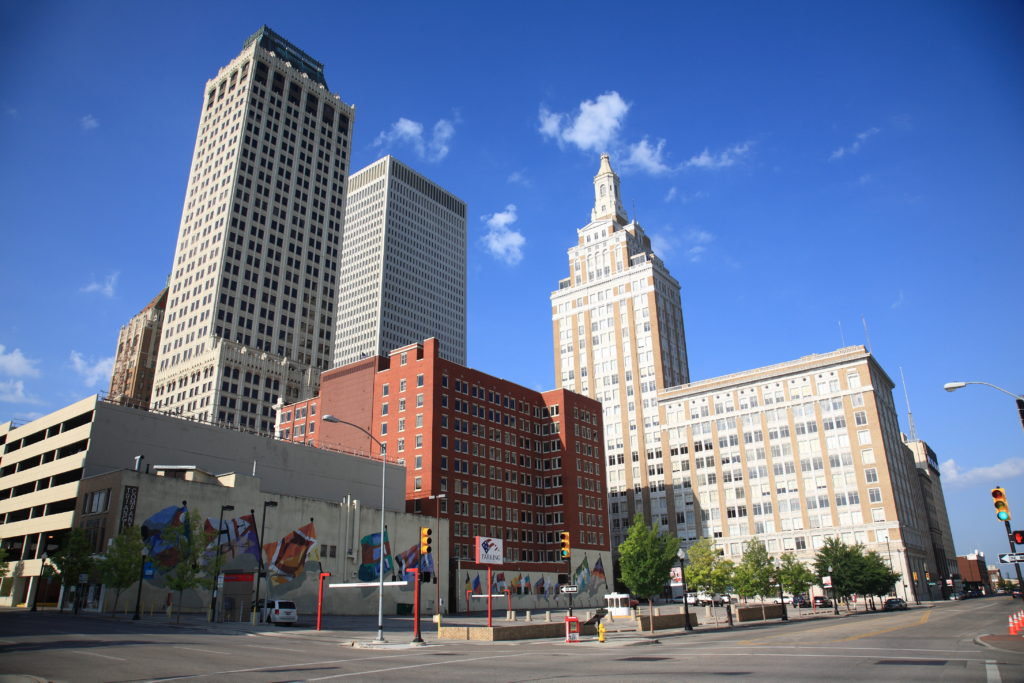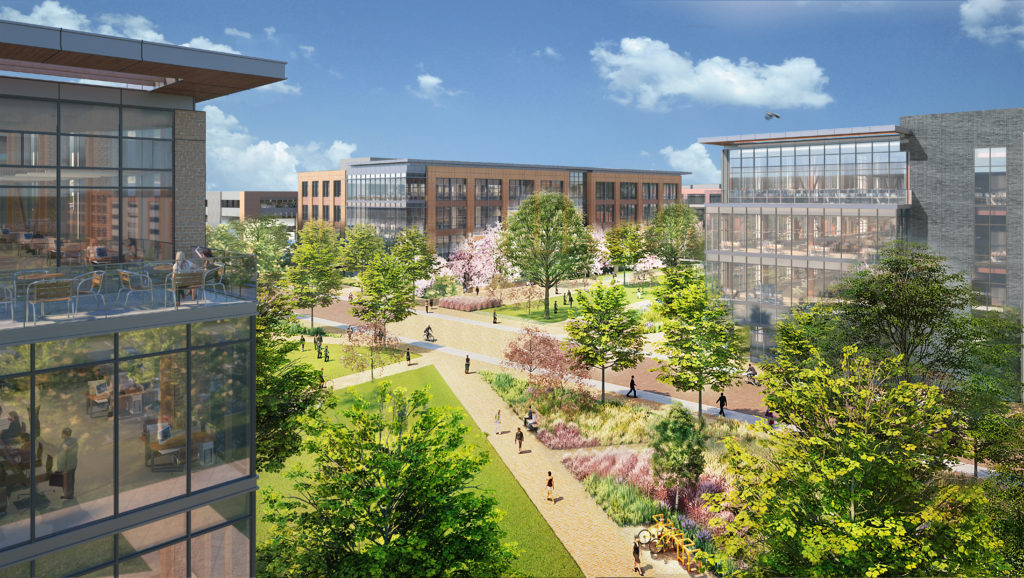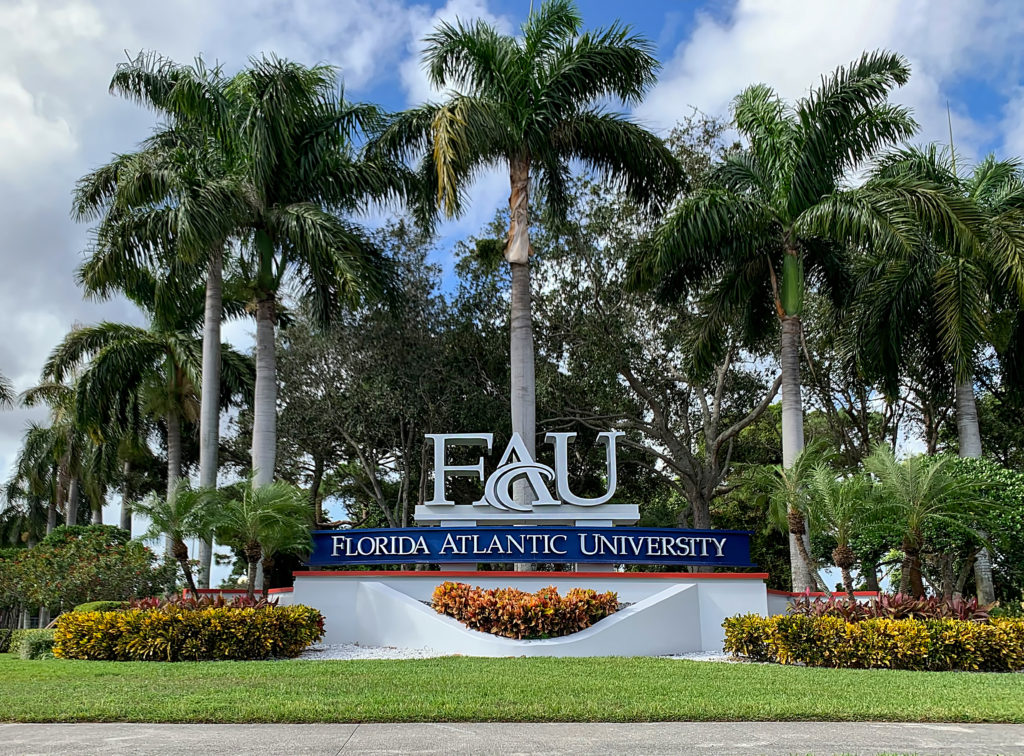July 2019
Nearly everything about The 78, a massive redevelopment project reshaping an abandoned 62-acre parcel just southwest of Chicago’s downtown, is big. Vacant for 90 years, the riverfront property will be transformed into space for 24,000 workers, new corporate campuses, a high-tech research center, and 12 acres of riverfront parkland after an expected $7.2 billion construction process. Even the name screams outsized ambition: The city currently has 77 designated community areas, or neighborhoods, with this project gunning to be the latest added to the list.
“It’s the biggest thing I can think of in Chicago for years,” says Whet Moser, a Chicago author and urbanist. “As part of the return to the city and movement of companies back downtown, there’s a good reason to expect that you can sell that space to corporations, and all the stores and services and housing that come with having so many people working there.”
Like other big American cities, Chicago is experiencing a wave of megadevelopments: large-scale, mixed-use, multibillion-dollar projects. Lincoln Yards and the renovation of the Michael Reese Hospital endeavor to harness the desire for urban living to create new neighborhoods from scratch. And, like similar projects in other big cities, The 78 is being handled by a division of Related, a development firm that’s made a name for itself with megaprojects such as Hudson Yards and the Time Warner Center. As Curt Bailey, president of Related Midwest, says, the company operates at a scale that few can match.
“We are willing to operate on the fringes of real estate so we can get to these incredible parcels and do special things on them,” he told the Real Deal. “So yeah, we don’t do small as well as others. We don’t do easy as well as others. I think, given our history and our level of expertise, we do better when it’s big and complicated.”
:no_upscale()/cdn.vox-cdn.com/uploads/chorus_asset/file/18366484/the78.0.png)
If the game of urban American real estate today is dominated by the megadevelopment—massive, city-changing projects that often marry public and private financing—Related has become one of the signature players. Owned by Stephen Ross, whose net worth is pegged at $7.7 billion by Forbes, Related, and its wide array of domestic and international divisions, has over $50 billion in real estate assets.
Coming off the opening of phase one of Hudson Yards, arguably the most talked-about addition to Manhattan in years, Related shows no sign of slowing, with the 78 ramping up in Chicago, a $8 billion Santa Clara megadevelopment in Silicon Valley planning to break ground next year, and a Frank Gehry-designed mixed-use complex in downtown Los Angeles, the Grand, pouring its foundation earlier this month.
Bigger and better isn’t a new real estate strategy, says author Steve Bergsman, who interviewed Ross in 2006 for his book Maverick Real Estate Financing: The Art of Raising Capital. But Ross and Related operate differently than their competitors. When Ross started and grew the company in the ’70s and ’80s, many developers were about transactions. Ross wanted to build an integrated firm that could do everything, from gather financing to plan mixed-use urban villages. It was an approach that would prove prescient for urban development.
The meaning of the megadevelopment era
More than a decade into the current economic cycle, demand for downtown real estate hasn’t abated. Since most of the easily developable land has been bought and sold many times over, cities and developers have been giving more complicated locations a second look.
The remaining areas ripe for redevelopment—such as waterfronts, rail yards, and huge abandoned industrial sites—are generally in prime locations and well-connected from an infrastructure perspective. But developing them requires expertise, capital, and planning. It requires being able to wait out years of approvals and planning meetings and navigate bureaucracy, to think big and master plan entire new neighborhoods, and to risk money for what can be a decade-long process.
Related has earned a reputation for being able to thrive on that complexity, thinking in “decades, not quarters,” according to Crain’s New York. The firm’s most famous deals, Time Warner Center and Hudson Yards, were both projects unsuccessfully pursued by other massive real estate firms (Mortimer Zuckerman and Tishman Speyer, respectively). When they couldn’t figure out how to close their deals, Related stepped in. These firms are far from the only ones who see potential in post-industrial landscapes. But when table stakes for such projects start in the billions, and require extensive negotiations with local government, only a few players can compete.
:no_upscale()/cdn.vox-cdn.com/uploads/chorus_asset/file/18366495/_1x_1.0.jpg)
Take Related’s forthcoming Santa Clara project, which seeks to turn a 240-acre golf course into a combination of high-end residential, upscale retail, public parks and a public square, and office space for tech firms, along with 170 affordable housing units. Related needed to weather six years of planning and a pair of lawsuits by the cities of Santa Clara and San Jose before even getting the green light. Kim-Mai Cutler, a Bay Area urbanist and partner at Initialized, says that development in the region is so lengthy and unpredictable, it’s very hard for small actors to survive the process.
“The Bay Area loves small, bespoke things, but if you make the process so onerous, only certain actors will have the wherewithal and resources to make it through,” she says. “Small players can’t take the risk.”
From affordable housing to a symbol of urban luxury
Born in Detroit in 1940, Stephen Ross was driven from a young age to become a business tycoon. His uncle, Max Fisher, a financier and oilman who made the Forbes list of richest Americans, loomed large over Ross’s childhood. He gave Ross’s family a secondhand car and showered gifts, such as prime seats for Detroit sporting events, on his nephew.
“Why is the University of Michigan business school named after me?” he told Town and Country magazine. “Because the Ohio State business school is named after him.”
Ross, who graduated as a tax lawyer, moved to New York in the late ’60s and worked on Wall Street for a few years before being fired from a job at an investment firm. He decided to try his hand at real estate and started the Related Housing Company in 1972 with a $10,000 loan from his mother (“everything is related,” he said at the time). Even that name shows Ross thinking big from the start: He decided against his initial name, First Housing, because he couldn’t register it in every state, as he could with Related. He also felt that naming the company after himself, like so many other developers, was a mistake. “People don’t want to work for a person, they want to work for a company and be part of a company.”
As Ross would tell Bergsman, he saw a huge opportunity in developing affordable housing. By focusing on financing and developing government assisted multifamily housing for long-term investment, and using his skills as a tax attorney to take advantage of government-backed financing and tax credits, he was able to, in effect, become vertically integrated. His innovation was being a creator of affordable housing credits, a mortgage financier, and a developer. Eventually, Related would manage capital for large institutions and pension funds, as well as sovereign wealth funds, attracting $4 billion in outside investment capital.
“I started in affordable housing so I could learn the business using my skills as a tax attorney,” he told the Real Deal. “Meanwhile, I was selling the tax shelters that accompanied the projects to wealthy investors. The financial arm eventually became the largest supplier of debt and equity for affordable housing.”
“He thought about it on a broader scale,” Bergsman tells Curbed. “Ross wanted everything under one umbrella, that was his big innovation. He’s an investment builder, not a merchant builder, he keeps the properties. He was able to grow like that because he had the financing capabilities. Most don’t have those deep pockets.”
As Ross built out his affordable housing business in the ’70s and ’80s—the company claims to be one of the largest owners of affordable housing today—the growing number of properties under the Related umbrella created a “river of cash” that helped the company weather real estate booms and busts. By the ’80s, Related had begun opening new divisions across the U.S. and the world, and started diversifying into retail and mixed-use projects, including CityPlace in West Palm Beach (recently renamed Rosemary Square).
:no_upscale()/cdn.vox-cdn.com/uploads/chorus_asset/file/18366510/GettyImages_2931529.jpg)
A turning point with Time Warner Center
The turning point for the company was the Time Warner Center, the renovation of Columbus Circle in Manhattan into a mixed-use complex consisting of high-end office spaces, luxury residential living, and extravagant dining and retail. Opening in 2004, the complex would presage the next decade and a half of high-end development in the city and help open up the west side of the island to projects like the High Line; New York magazine’s Justin Davidson calls it “the most influential construction project in New York.”
While the twin towers of the Time Warner Center have become landmarks in New York City, at the time, the project was far from a guaranteed success. Ross, whose offices overlooked the site of what was once the New York Coliseum, a bland convention center, was fixated on the possibilities. His intuition, that New York could support a mixed-use project with an indoor mall, seemed daring at the time (Related Urban, helmed by Ken Himmel, has also been instrumental in the company’s push into this type of development). Since its opening, it’s been seen as a huge success, and the project that enabled Ross to later take on Hudson Yards.
“They were looking at what the economics could afford at the time,” Ross told Davidson. “The predominant use they had in mind was a convention center-hotel, with maybe some condos and rentals: very pedestrian. I saw it as a world-class site.”
The project also saw Ross wooing Time Warner CEO Richard Parsons, telling him that the opportunity “isn’t about real estate; it’s about showcasing your brand.” Architecture critic Ada Louise Huxtable, writing in the Wall Street Journal, said the result was “exactly what a New York skyscraper should be—a soaring, shining, glamorous affirmation of the city’s reach and power.”
Hudson Yards and the commodification of the city
If Time Warner Center helped show the potential of mixed-use downtown development at a larger scale, the $26 billion Hudson Yards took that several steps further, with a single developer creating an entirely new neighborhood. The gleaming constellation of new buildings, supporting office space, high-end retail, and residential projects, built atop a functioning rail yard, was one of the most complicated and costly projects in the city’s history, taking more than a decade to complete. It was “the last frontier in Manhattan,” according to Dan Doctoroff, current Sidewalk Labs CEO and founder, and previously a deputy mayor of development in the Bloomberg administration trying to realize the potential floating above this grid of train tracks.
The high-end city-within-a-city has been called “the Rossian lifestyle at a supersized scale,” and showcases the company’s diverse interests. Related and Ross own the Equinox Fitness luxury health-club line (the first Equinox Hotel opened in Hudson Yards) and was once a partner with Union Square Events, the catering division of celebrity chef Danny Meyer’s business. Ross’s own private investment company, RSE, which was launched in 2012,invests Ross’s capital into companies such as Momofuku, Milk Bar, and the reservations platform Resy, all dining options preferred by the wealthy millennials who are the prime audience for the new apartments at Hudson Yards.
:no_upscale()/cdn.vox-cdn.com/uploads/chorus_asset/file/18366517/GettyImages_1158433909.jpg)
And Ross was able to devise the financial tools to make it all work, despite numerous setbacks. After winning a bidding process for the site in 2008, he lost his lead tenant when Rupert Murdoch pulled out, and had to cede to site to Tishman Speyer. Then, as the economy took a nosedive, Speyer pulled out and Ross was able to recover, restructuring the deal to include stalling mechanisms that allowed the company to wait out the economy. Related raised over $600 million for Hudson Yards through the EB-5 visa program, which gives foreign investors residency status.
Now that Hudson Yards has opened, Related may have its crown jewel. But as the company continues to break ground on new projects and diversify its business, fundamental critiques of this model remain. Are the public subsidies for these kinds of public-private projects, which help support private businesses, in the city’s best interest? Lincoln Yards in Chicagohas been pilloried for tapping into tax-increment financing, and the Amazon HQ2 development was pushed out of Queens by local advocates and activists against the notion of tax breaks for one of the world’s wealthiest corporations. Curbed critic Alexandra Lange called Hudson Yards a neighborhood for the wealthy, with “no weirdness, no wildness, nothing off book.”
Related and Ross would say that Hudson Yards creates big benefits for the city: In addition to adding more than 3,000 new affordable housing units and eventually paying off the bonds that funded a subway extension to the neighborhood, an economic analysis prepared for the company by Appleseed, a local consulting firm, estimates that Hudson Yards will add $19 billion annually to New York City’s GDP, 2.5 percent of the total, and contribute $477.3 million in annual city tax revenues.
During an interview at the recent Future of Everything Festival, organized by the Wall Street Journal, Ross said that critics of Hudson Yards have created an atmosphere hostile to business, and that labeling the mixed-use project as being too focused on wealthy customers is “newspaper talk” and “politicians trying to make an example of things.”
Ross, for his part, doesn’t think there will ever be another Hudson Yards. “But I think people will come and look at it, from a sustainability standpoint, and say, ‘I want a Hudson Yards in my city,’” he told Surface Magazine.
In addition to the projects in LA, Chicago, and Silicon Valley, Related announced a $3 billion urban senior living project with Atria, taking advantage of the “silver tsunami” of baby boomers entering retirement. As Ross and Related evolve on all fronts, the company continues to find new opportunities to meet the changing housing needs of U.S. cities.
“Real estate hasn’t changed since the Greek times,” Bergsman says. “Find your plot of land and build your Parthenon. But the people who succeed find something different in the obvious.”
:no_upscale()/cdn.vox-cdn.com/uploads/chorus_asset/file/19173878/roofstock.jpg)
:no_upscale()/cdn.vox-cdn.com/uploads/chorus_asset/file/19179389/_DSC5493.jpg)
:no_upscale()/cdn.vox-cdn.com/uploads/chorus_asset/file/19179392/_DSC5447.jpg)
:no_upscale()/cdn.vox-cdn.com/uploads/chorus_asset/file/19224234/DSC_0014.jpg)
:no_upscale()/cdn.vox-cdn.com/uploads/chorus_asset/file/19218846/centurycity.jpg)
:no_upscale()/cdn.vox-cdn.com/uploads/chorus_asset/file/19218834/6DWKEQ1R.jpeg)
:no_upscale()/cdn.vox-cdn.com/uploads/chorus_asset/file/19218823/IMG_0121_1_.jpg)

:no_upscale()/cdn.vox-cdn.com/uploads/chorus_asset/file/19246177/2019_08_19___PhilClarkinHR_4665.jpg)
:no_upscale()/cdn.vox-cdn.com/uploads/chorus_asset/file/19246251/17.jpg)
:no_upscale()/cdn.vox-cdn.com/uploads/chorus_asset/file/19246183/DSC07663_2.jpg)
:no_upscale()/cdn.vox-cdn.com/uploads/chorus_asset/file/19257649/_AVD2204.jpg)
:no_upscale()/cdn.vox-cdn.com/uploads/chorus_asset/file/19257651/_AVD2395.jpg)
:no_upscale()/cdn.vox-cdn.com/uploads/chorus_asset/file/19257654/20190605_arvada_spring_029.jpg)

:no_upscale()/cdn.vox-cdn.com/uploads/chorus_asset/file/19285836/VV_LPH_Bedroom.jpg)
:no_upscale()/cdn.vox-cdn.com/uploads/chorus_asset/file/19285855/Meditation_Room_Kris_Tamburello.jpg)
:no_upscale()/cdn.vox-cdn.com/uploads/chorus_asset/file/19286320/IMG_0506__1___1_.jpg)
:no_upscale()/cdn.vox-cdn.com/uploads/chorus_asset/file/19286327/IMG_1084__1___2___1_.jpg)

:no_upscale()/cdn.vox-cdn.com/uploads/chorus_asset/file/19385834/view_1.jpg)
:no_upscale()/cdn.vox-cdn.com/uploads/chorus_asset/file/19385820/map_view_1.png)

:no_upscale()/cdn.vox-cdn.com/uploads/chorus_asset/file/19720709/Center_1.jpg)
:no_upscale()/cdn.vox-cdn.com/uploads/chorus_asset/file/19720518/KateRussell_MeowWolf_A2A0270.jpg)
:no_upscale()/cdn.vox-cdn.com/uploads/chorus_asset/file/19720519/33921581208_cab040fe13_o.jpg)


